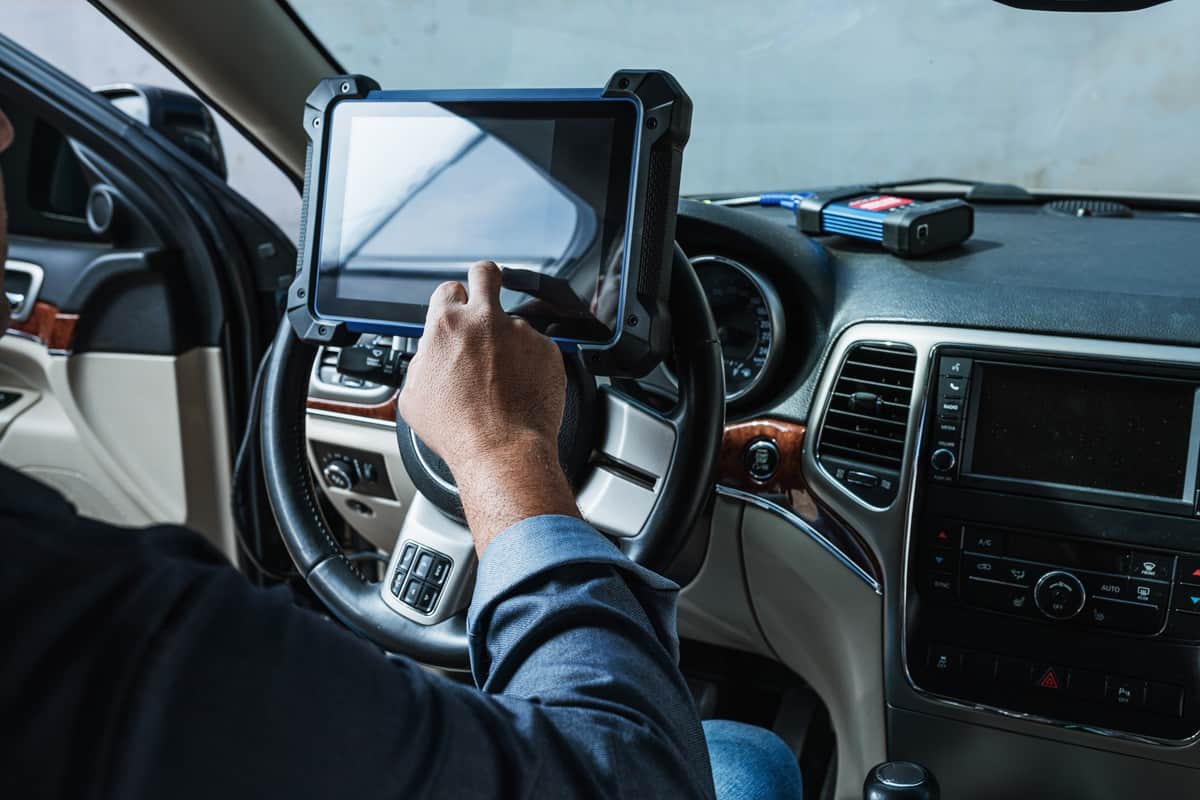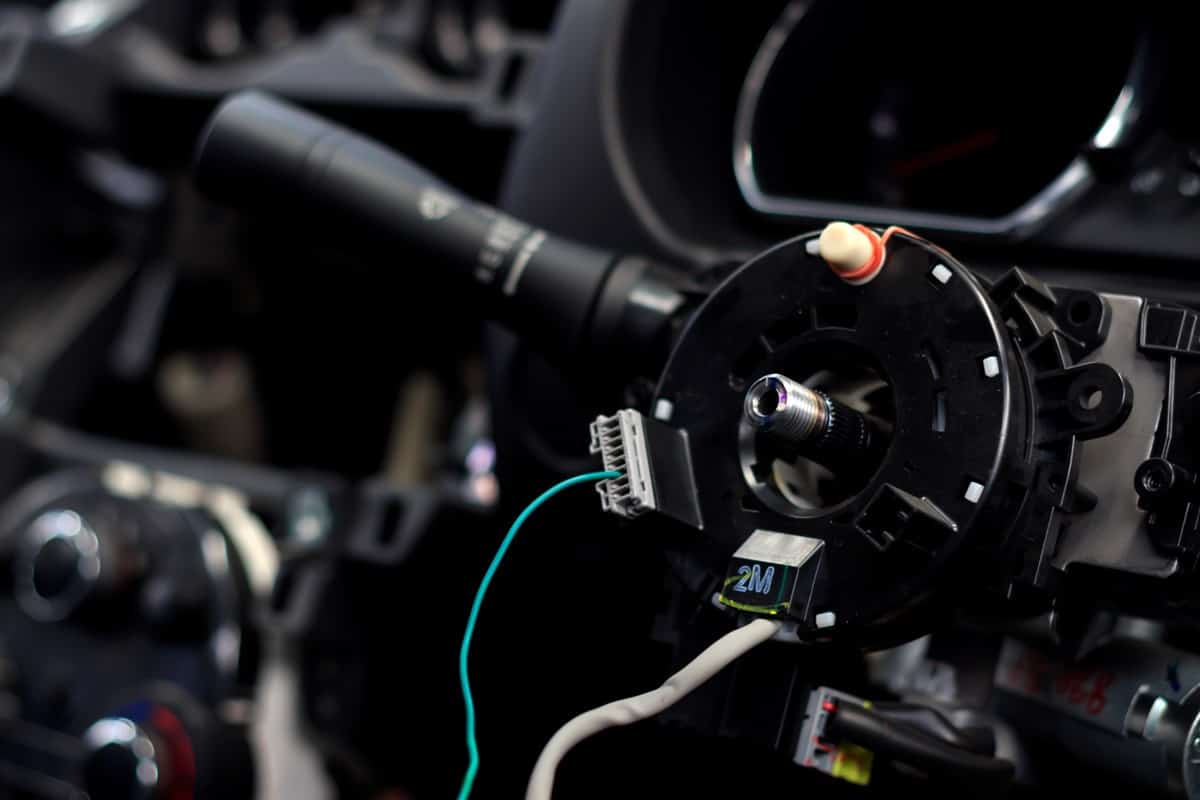Do you own a Ford? Are you having problems with your steering wheel? Then you are in the right place for valuable information. We understand how you might feel about your Ford electric power-assisted steering (EPAS) failure. To help you, we have searched far and wide for information that will put an end to your confusion.
For problems relating to EPAS, the repairs mostly require professional assistance, although there are some fixes you can do yourself.
The good news is that Ford has offered recalls with repairs free of charge for its cars and SUVs with EPAS-related problems. You will know if your Ford's EPAS is the problem if:
- Your steering suddenly feels rigid or unresponsive.
- Your steering wheel starts to nibble on its own.
- The steering wheel is loose.
In the following sections, we will share further important information about steering wheel problems and how you can have Ford check your car. If you're interested, then read on!
![Ford F-150 Lightning Electric Truck.3D illustration., Ford Power Steering Assist Fault Guide [Explorer, Escape, Fusion And More]](https://vehq.com/wp-content/uploads/2022/09/26.-Ford-Power-Steering-Assist-Fault-Guide-Explorer-Escape-Fusion-And-More.jpg)
What To Do If Ford Power Steering Assist Fails

Ford integrated its revolutionary electric power-assisted steering (EPAS) in 2005. With this innovation came inherent advantages and challenges. Here is a guide for you to follow when you experience EPAS failure in your Ford:
Your steering suddenly feels rigid or unresponsive.
Have you experienced driving smoothly, and then suddenly, the steering started getting heavy? At the same time, the traction control or check engine light may have appeared on your dashboard. This is a possible EPAS problem relating to the steering column.
If this happens, you can try restarting your vehicle. Repeat two to three times. This may address your problem for the time being, but this is only a temporary fix. You will have to take your car in for a thorough diagnostic check.
You can also perform a preliminary DIY scan on your car. The codes from your scan will reveal the possible reason for your steering difficulty.
Your steering wheel starts to nibble on its own.
The term "nibble" refers to the shaking of your steering wheel. If you notice your steering wheel does this, there might be a problem with your wheel alignment.
If your steering wheel still shakes after alignment, then it is a possible EPAS fault. There could be a problem with the steering angle sensor, which is also manifested by either the traction control or the engine light turning on.
The nibbling in EPAS-related problems usually happens when your car cruises at low speed.
The steering wheel is loose.
Loose steering also has to do with the steering angle sensor. A faulty sensor sends your computer's vehicle incorrect information.
This may cause the EPAS system to give uncoordinated steering input. Since EPAS failure usually manifests at a low speed between 10mph to 20mph, fatal accidents as a result of the related failure are uncommon.
Common Causes For Ford EPAS Failure
The EPAS was created to replace the hydraulic steering system to produce fuel-economic automobiles. It uses a motor to assist the steering rack and engages only when the steering wheel is turned.
However, Ford has encountered some serious problems with its EPAS system that affect the driving experience. The issues stem particularly from failures of the steering torque sensor and steering position sensor.
Common Ford error codes
While we have enumerated the initial manifestations of EPAS faults, we should identify the problems exactly. Here is a list of common Ford EPAS fault codes and their manifestations:
| For Code | Fault | Possible Symptoms |
| C102D | High Friction Inside Power Steering | *Anti-Lock Brake System (ABS) warning light on *Engine light on (Service Engine Soon warning light) |
| B1D23 | Power Steering Overheat Sensor | *Engine light on (Service Engine Soon warning light) |
| C1897 | Steering VAPS Circuit Loop Failure | *Anti-Lock Brake System (ABS) warning light on *Engine light on (Service Engine Soon warning light) |
| B227B | Steering Shaft Position Sensor Malfunction | |
| B3104 | Steering Shaft Position Sensor Malfunction | |
| C0051 | Steering Wheel Position Sensor | |
| U0428 | Invalid Data Received From Steering Angle Sensor Module | *Engine light on (Service Engine Soon warning light) |
| U0126 | Lost Communication With Steering Angle Sensor Module | |
| C1B00 | Steering Angle Sensor |
All of the problems enumerated above require professional attention. Although the cost to diagnose depends on your location, it can still be costly as they charge per hour. There are things you can do to save a few dollars.
How To Make Preliminary Diagnosis
A DIY car scan and diagnosis are now possible. As long as you have an OBD2 scan handy and some knowledge on how to interpret it, then you can definitely conduct this two-step self-diagnose procedure at home:
Reading the Diagnostic Trouble Codes (DTC)

All cars manufactured and sold after 1996 can make use of DTC or Onboard Diagnostic System (OBDS). This scanner is also readily available on the market. If you decide to purchase one, here is how to use it:
- If your car makes use of Bluetooth, you need to pair your device with a mobile app. Once you have downloaded the app, just follow the instructions to run the scan.
- For wired scanners, locate the OBD2 port in your car and plug it in. It is usually located on your dashboard underneath the steering wheel.
Purchase this OBD2 scanner on Amazon
Interpreting the codes
Getting the error code is the easy part. Interpreting it is an entirely different challenge. The error code is divided into four parts.
The first letter
The first letter refers to which part of the car the fault may be found in:
P for Powertrain
This includes engine, transmission, ignition, and emission to name some. The P-set is the largest group of codes.
B for Body
Mainly includes the passenger compartment area like the power seating and airbags.
C for Chassis
Mostly concerns mechanical systems such as brakes, steering, and suspension.
U for Network and Vehicle Integration
Involves the functions of your car's computer system.
The second number
The number immediately following the letter can only be from 0 to 3. The code is as follows:
0
The numbers 0, 2, and 3 refer to standard codes found in most cars.
1
The number 1 denotes a manufacturer-specific code.
The third number or letter
This code shows the particular system at fault. There are eight systems to note:
| Code | System |
| 0 | Fuel and air metering and auxiliary emission controls |
| 1 | Fuel and air metering |
| 2 | Fuel and air metering (injector circuit) |
| 3 | Ignition systems or misfires |
| 4 | Auxiliary emission controls |
| 5 | Vehicle speed control and idle control systems |
| 6 | Computer and output circuit |
| 7 | Transmission |
| A - F | Hybrid Trouble Codes |
The last two numbers
A DTC is usually made of a 5-character combination. The last two digits will span from 0 to 99, revealing the exact problem.
How To Fix Power Steering Assist Fault In Ford

Now you know the codes. The main question now is, is a DIY fix possible? In Ford models Escape/ Mariner 2008-2012, a DTC B2278 means a defect in its torque sensor. The torque sensor with part number CL8Z-3F818-A can be replaced individually at home.
Here are steps you can follow to replace your torque sensor:
- Before disassembly, you need to lift the front wheels off the ground, keep the wheels positioned straight ahead, and the steering wheel poised at the 11 o'clock position.
- The new torque sensor kit comes with instructions. Follow the written steps on how to remove the upper and lower steering column.
- Before removing the old torque sensor, make sure the steering shaft keyway slot is aligned with the diamond-shaped mark on the sensor's body. You can gently bump the wheels to align the two.
- Remove the sensor by pulling the wire upwards and lifting the other side of its body from the steering housing using a 90-degree pick.
- Take the alignment tool from the kit. Fit the tab into the steering housing opening and the tool spline into the keyway.
- Once the steering shaft is properly aligned with the housing, you can install the new torque sensor. It is important to remember that any small movement can throw the steering column out of place.
- With the locking pin in place, make sure that the raised spline of the sensor is aligned with the keyway slot of the steering shaft. Push the sensor with your thumbs to insert it into the steering shaft. Use the alignment tool for seating the new sensor fully.
- The locking pin must be inside the window in order for you to know if your torque sensor is correctly aligned. If the pin touches one side, you must realign your sensor again. Pull the locking pin out if the sensor is aligned and remove the alignment tool. The entire locking pin hole should be visible inside the window. Otherwise, realign.
- Reassemble the steering column, lower the vehicle and ignite the engine. The steering wheel and wheels should stay entirely centered.
For a step-by-step visual guide on how to install your new torque sensor, watch this video:
How To Know If Your Ford Has Been Recalled
To address their EPAS issues, Ford offered a recall of sedans and SUVs affected by EPAS failure and service them for free. You can visit their recall page or download their FordPass app and confirm with your Vehicle Identification Number (VIN) to find out if your car has been recalled.
In Closing

Innovations in car automation still have a long way to go. While manufacturers like Ford find new ways to reduce parts prone to mechanical wear and tear, this must be balanced with a convenient and safe driving experience.
Ford car owners need to be aware of the inherent vulnerabilities of their vehicles, including EPAS problems, and how to address them.
Other related topics:

